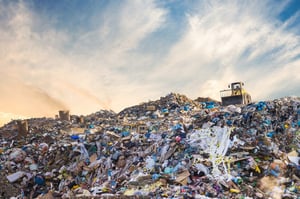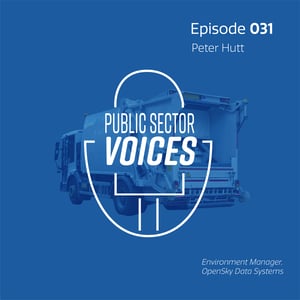New Ways of Looking at Environmental Data
Author: Peter Hutt, Business Intelligence Consultant at OpenSky
Ambitious targets have been set, generally at a European level and then filtering down to local government, categorising the waste streams, and setting both targets and time frames.
This has been effective in driving change, opening new markets and conserving resources. The targets, and the measures, however have been based on the tonnages of the waste material. This gives rise to a problem:
- Is a tonne of asbestos the same as a tonne of food?
- Can the disposal of a tonne of infectious clinical waste be classed the same as a tonne of conglomerate from a building site?
So, new ways of looking at waste are needed, new ways of measuring both the waste and the disposal of the waste, and new ways of valuing the resources and effort required to recover the waste.
This has given rise to a number of alternate methodologies. Amongst these are:
- Carbon Footprint or Greenhouse Gas Equivalences – where the material is measured in the amount of Greenhouse Gases produced in its disposal.
- Natural Capital Accounting – where each material is both an environmental asset covered by physical accounts, but also has a valuation for the service it gives which is covered by the financial accounts – and these cover the full service of the resource from extraction to final consumption.
Both of these have both their attractions and their demerits. The attraction is in giving a real value of the impact of the disposal of the material that it has on the environment.
Costs
For the authorities, however, while these measures, and targets for these measures are desirable, and can be effective in driving reductions in waste, they also must look at the costs involved.
At one level the costs are quite simple, there is a landfill tax if waste is taken to the dump as opposed to a gate fee when taken to the Energy from Waste incinerator. The latter, being less, is more attractive and so waste is sorted and sent to the incinerator as a preference. They know how many tonnes, and of which material were sent to each and can convert these readily to Carbon equivalents.
The exchequer cost is, however, far greater. There is the disposal or incinerator site to be purchased, equipped and run. The inspectors, the collectors of waste, waste containers and the cost of haulage as the waste is moved from site to site.
To put a real value on the cost of waste all of this needs to be allocated against each waste stream to determine which methodologies of collection and disposal are providing the greatest impact.
To be effective, the cost and value of the waste needs to be looked at in multiple ways so that the authorities can make informed decisions of how to provide the greatest return both to the environment and to their own citizens and residents.
Data
Current data collection, of movements and tonnages will, in the near future, be complemented by values of carbon and utilisation, costs of production, usage, change and disposal and impacts of different reuse, reform or disposal methodologies.
Machine learning will use this data to continually refine the options open, while predictive analytics, parameterised for variables such as population, housing density, climate, ethnicity will endeavour to show what can happen with demographic change.
All this is aimed at driving better decision making both for the people, and for the environment.


